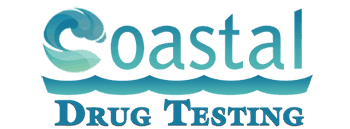 Our local DOT drug and alcohol testing centers are located in Julian CA and the surrounding areas providing DOT drug testing, DOT alcohol testing and DOT physicals for all DOT modes regulated by Part 40. Same day service is available at our Julian CA DOT drug testing facilities and most of our DOT drug testing locations are within minutes of your home or office.
Our local DOT drug and alcohol testing centers are located in Julian CA and the surrounding areas providing DOT drug testing, DOT alcohol testing and DOT physicals for all DOT modes regulated by Part 40. Same day service is available at our Julian CA DOT drug testing facilities and most of our DOT drug testing locations are within minutes of your home or office.
What type of DOT Testing is required?
Coastal Drug Testing provides DOT pre-employment, random, post-accident, reasonable suspicion and return to duty testing at our Julian CA DOT drug testing centers.
If you hold a CDL license, a large, medium or a small trucking company, Coastal Drug Testing has a complete DOT compliance package which includes all the requirements to comply with CFR 49 part 40.
All Coastal Drug Testing DOT drug testing centers utilize SAMHSA Certified laboratories and a licensed Medical Review Officer as required by DOT part 40 regulations.
The U.S Department of Transportation (DOT) requires that all DOT regulated "safety sensitive" employees have a negative DOT pre-employment drug test result on file and be actively enrolled in a DOT approved random drug and alcohol random testing pool (consortium).
In addition, if a DOT regulated company has more than one "safety sensitive" employee, the employer must also have a written DOT drug and alcohol policy along with an on-site supervisor that must have completed a reasonable suspicion supervisor training program.
On the road and need a DOT Drug or Alcohol test? No Worries!
To be compliant with DOT regulations, a company's DOT drug and alcohol testing program must have the following components:
- Employee Drug Testing
- Written Drug and Alcohol Policy
- Supervisor Training
- Substance Abuse Referral
- Employee Education
- Random Selection Program
- Post Accident Testing
- Designated Employer Representative
- Federal Chain of Custody Forms
- Part 40 Regulations on File
The Department of Transportation (DOT) has specific drug and alcohol testing requirements for the all transportation modes all DOT agencies.
Our modes included are:
- Federal Motor Carrier Safety Administration (FMCSA)
- Federal Aviation Administration (FAA)
- Federal Transit Administration (FTA)
- United States Coast Guard (USCG)
- Pipeline and Hazardous Materials Safety Administration (PHMSA)
- Federal Railroad Administration (FRA)
Are You Enrolled in a DOT Consortium?
Individuals who are employed in a position designated as "safety sensitive" must be actively enrolled in a random drug and alcohol testing program. Oftentimes, covered employees will join a group of other DOT regulated employees in a random testing program and this is referred to as a DOT Consortium. Generally, an employer who has less than fifty employees or single operators will join the consortium which will comply with the random drug and alcohol testing requirements of 49 CFR Part 40. Employers that have over 50 employees who are regulated by Part 40 may elect to be enrolled in a "stand alone" random testing pool.
The DOT consortium is cost effective and complies with all requirements of 49 CFR Part 40 which mandates that all "safety sensitive" employees be enrolled in a random drug and alcohol testing program.
The Department of Transportation (DOT) has strict regulations requiring regulated companies and independent operators (CDL License Holders) to be an active member of a DOT drug and alcohol Consortium and failure to comply with these regulations can result in significant fines and other DOT sanctions.
We are fully versed in the DOT procedures for pre-employment drug testing, random drug testing, reasonable suspicion drug testing, post-accident drug testing, return to duty drug testing and follow up drug testing.
DOT regulated companies with multiple safety sensitive employees must also have an employee within the company who is assigned as the "designated employer representative" (DER). This is the person responsible for removing any DOT "safety sensitive" employee who is covered by 49 CFR Part 40 from performing a DOT safety sensitive position when a positive drug or alcohol test result has occurred or an employee has refused to take a required DOT test.
If you have recently become a DOT regulated company, within the next 18 months the Department of Transportation (DOT) will conduct a "new entrant" inspection to ensure that you are in compliance with all DOT regulations including the drug and alcohol testing requirements. If you are currently a DOT regulated company, you are subject to regular inspections to ensure compliance.
Avoid DOT fines, penalties and be complaint with all DOT drug and alcohol testing regulations! Coastal Drug Testing can assist small, medium and large DOT companies in complying with all requirements of 49 CFR Part 40.
DOT Drug Testing Locations in Julian CA
(Don't see a location near you? Call us (800) 828-7086)
Local Area Info: Julian, California
Julian is an official California Historical Landmark (No. 412). Also, the Julian townsite and surrounding area is defined by the San Diego County Zoning Ordinance Section 5749 as the Julian Historic District. This designation requires that development adhere to certain guidelines that are administered by the Architectural Review Board of the Julian Historic District, which is appointed by the San Diego County Board of Supervisors. (The "Design Guidelines Manual" is available in portable document format at San Diego County's office web site.)
The first European settlers to arrive in this area were "Cockney Bill" Williams from England and John Wesley Horrell, who both arrived in the area in 1850 or 1851. The town itself was first settled by Drury, Frank, and J.O. Bailey, all brothers; and their cousins, Mike and Webb Julian. They were passing through the region from San Bernardino en route to Arizona in 1869, in the wake of the American Civil War. Taken to the beauty of the Julian area, Drury Bailey interrupted the group’s travel plans and chose instead to settle here; he chose to name the settlement “Julian” after Mike Julian because “Mike was better looking” than any other member of the Bailey family. Julian was also a former Confederate soldier who later was elected San Diego County Assessor. Shortly afterwards gold was discovered in the Julian region. A tent city initially formed in the boomtown, followed by more permanent structures as it became apparent that gold mining in Julian would persist for some time. Victorian-style structures were constructed in the latest-stage of Julian’s early settlement, including the Hoskins House.
After the American Civil War, in 1869, A.E. "Fred" Coleman, a former slave, crossed over what is now known as Coleman Creek just west of Julian. Seeing a glint of gold in the stream bed, he climbed down from his horse to investigate. Having had previous experience in the gold fields, he retrieved his frying pan and began panning the sands of the creek. Soon thereafter Coleman established the Coleman Mining District and was its recorder and also began the mining camp called Emily City later, renamed Coleman City. Learning of the find, others rushed to the district and tried to trace the gold to its source. On February 22, 1870, the first "lode", or hard rock, mining claim was filed in the Julian area. Since February 22 was President George Washington's birthday, the mine was named the Washington mine. Soon hundreds of anxious men and families rushed to Julian to stake their claims. Julian experienced a gold rush and became a tent city overnight. In April 1870, the area's first sawmill was set up and Julian began to take on a more permanent structure. Attempts to build rival mining towns at Coleman City, Branson City and Eastwood were defeated. Owners of the Cuyamaca rancho Land Grant claimed (the Cuyamaca Land Float) Julian, and its mines were within the Rancho boundaries. In 1873, the courts ruled that the Rancho did not include Julian and the mines. While the miners tried to wrestle the gold from deep within the earth, James Madison brought a wagon load of young apple trees into the mountains. The fruit trees flourished in the clear, fresh air. Apples are still a big product in Julian, many of which are used for making the world-famous Julian apple pies. Local historians have variably suggested that the Julian of 1873 rivaled San Diego in population and they unsuccessfully attempted to shift the county seat to the city.
